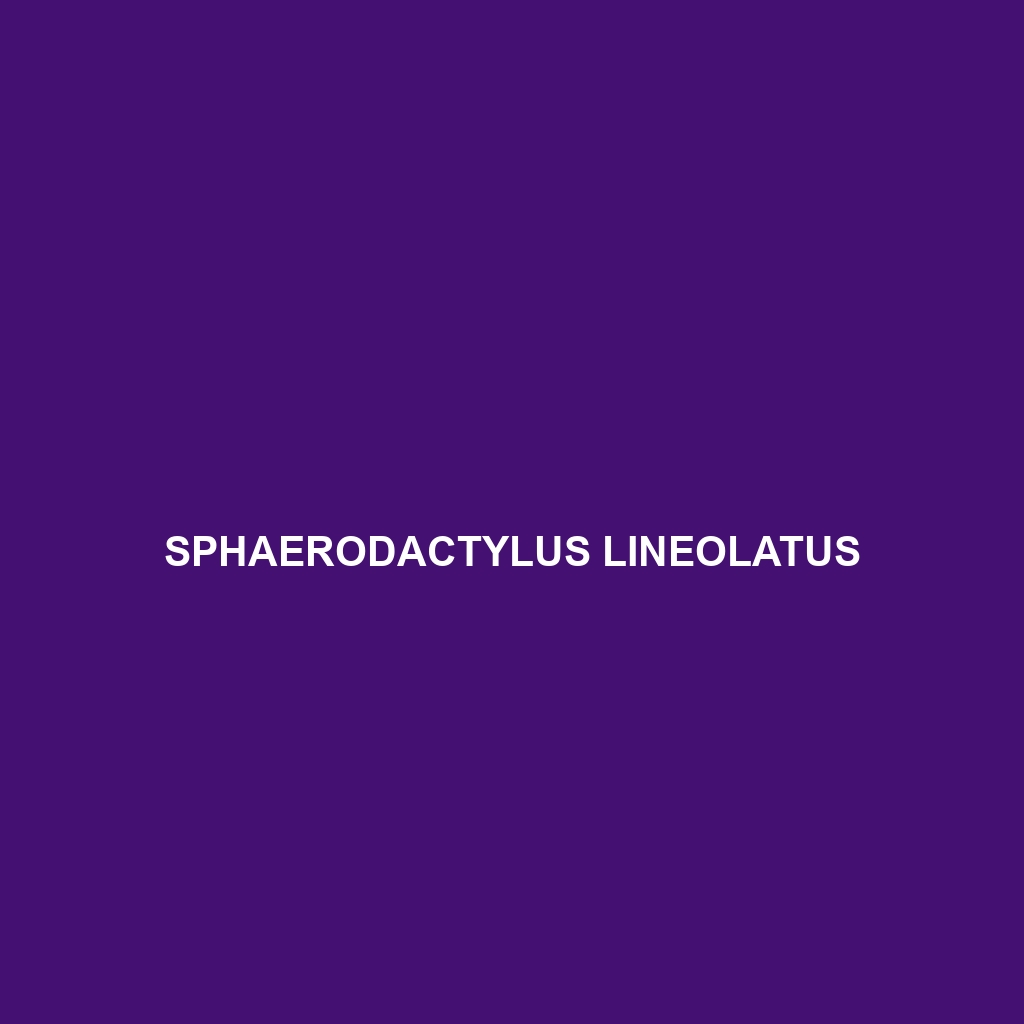<b>Sphaerodactylus micropithecus</b>, or the tiny gecko, is one of the smallest lizards, reaching lengths of 7 to 10 cm and thriving in the humid rainforests of the Caribbean. This nocturnal insectivore plays a crucial role in its ecosystem by regulating insect populations and demonstrates remarkable camouflage abilities for survival.
Tag: gecko habitat
Sphaerodactylus mariguanae
Mariguana Dwarf Gecko (<i>Sphaerodactylus mariguanae</i>): This small, vibrant lizard measures 3 to 5 inches and inhabits the warm, rocky coastal areas of the Bahamas, displaying intricate patterns for camouflage. Primarily nocturnal and insectivorous, the Mariguana Dwarf Gecko plays a vital role in its ecosystem by controlling insect populations and serving as prey for larger predators.
Sphaerodactylus lineolatus
<p><b>Sphaerodactylus lineolatus</b>, commonly known as the island gecko, is a small, nocturnal lizard measuring 2 to 4 inches, native to the Caribbean's rainforests and savannas. With a diet primarily composed of insects and the ability to regenerate its tail after autotomy, this adaptable species plays a vital role in maintaining the ecological balance in its habitat.</p>
Sphaerodactylus levinsi
<p><b>Sphaerodactylus levinsi</b>, a small Caribbean gecko measuring 5-7 cm, thrives in humid rainforest habitats of Puerto Rico. This nocturnal insectivore features vibrant coloration for camouflage, specialized toe pads for navigating slick surfaces, and plays a crucial role in maintaining ecological balance by regulating insect populations.</p>
Sphaerodactylus leucaster
Discover the White-Lipped Gecko (Sphaerodactylus leucaster), a small, agile lizard native to the humid tropical and subtropical regions of the Caribbean. Known for its distinctive pale lip and striking coloration, this nocturnal insectivore plays a crucial role in its ecosystem by controlling insect populations and serving as prey for larger predators.
Sphaerodactylus lazelli
<b>Sphaerodactylus lazelli</b>, commonly known as Lazell's gecko, is a small, tropical insectivore native to the Virgin Islands, characterized by a slender body, vibrant mosaic pattern, and enlarged toe pads for climbing. This fascinating species plays a vital role in its ecosystem, feeding on insects and serving as prey for various predators, while its ability to regenerate its tail enhances its survival in the wild.
Sphaerodactylus intermedius
<b>Sphaerodactylus intermedius</b>, also known as the intermediate spherical-toed gecko, is a tropical insectivore found in the Caribbean, characterized by its slender body measuring 4-6 inches, distinctive banding for camouflage, and nocturnal behavior. This species plays a crucial role in controlling insect populations and contributes to the biodiversity of its rainforest and coastal savanna habitats.
Sphaerodactylus guanajae
<p><b>Sphaerodactylus guanajae</b>, also known as the Guanaja Sphaero, is a small gecko native to the tropical rainforests and coastal areas of Guanaja Island, Honduras. Measuring 4 to 6 inches in length, this vibrant insectivorous lizard is vital to its ecosystem, helping to control pest populations while facing threats from habitat loss and urbanization.</p>
Sphaerodactylus graptolaemus
Discover the grappling gecko (Sphaerodactylus graptolaemus), a small, vibrant gecko endemic to the Caribbean that thrives in various habitats, from humid rainforests to arid savannas. With its unique toe pads for climbing, nocturnal hunting behavior, and vital role in controlling insect populations, this vulnerable species exemplifies remarkable adaptability and resilience in its ecosystem.
Sphaerodactylus glaucus
The Blue-tail Gecko (Sphaerodactylus glaucus) is a small, vibrant lizard known for its striking blue tail and nocturnal behavior, primarily found in humid tropical habitats of the Caribbean, including Cuba and the Bahamas. As insectivores, they play a crucial role in pest control while exhibiting unique adaptations like tail regeneration for survival.









